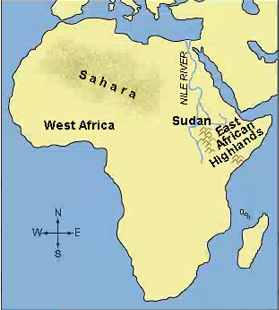题目解析:
【题目翻译】第4段指出以下哪一个是关于农业转移的?
A:它允许农民种植谷类作物,而不会减少牲畜的数量。
B:它允许农民同时种植各种作物。
C:它使农民能用最少的设备和努力来种植庄稼。
D:多年来,它使土壤肥沃,作物产量大。
【判定题型】题目问的是文章中的具体细节信息,故根据题目问法可以判断本题为事实信息题。
【关键词定位】:根据关键词“hifting agriculture”,定位到Passage 4 最后一句话,原句为“shifting agriculture, often called slash-and-burn, was highly adaptive for savanna farmers without plows, for it allowed cereal farming with the minimal expenditure of energy.
”,意思是:“经常被称作“刀耕火种”的转型农业,对于没有犁的大草原农民来说适应性很强,因为它允许以最少的能源消耗进行谷物农业。”。
【逻辑分析】文章表达的两者的关系是:“刀耕火种”的转型农业很适合没有犁的大草原农民。
【选项分析】
A选项:它使农民在不需要减少牧群规模的情况下耕种谷物。错误。第四段没有提及该信息。
B选项:它使农民可以同时种很多种农作物。错误,因为第四段没有提及该信息。文中只提到“The Saharan herders who moved southward to escape drought were almost certainly also cultivating sorghum, millet; and other tropical rainfall crops.”但这句话说南迁移的牧民,他们肯定也种植高粱、小米和其他热带降雨作物。但是并没有说他们用轮耕法同时耕种这些农作物,故B选项排除。
C选项:它使农民可以用最少的装备和精力来耕种。根据选项中的关键词“minimal”定位到第四段最后一句“Shifting agriculture, often called slash-and-burn, was highly adaptive for savanna farmers without plows, for it allowed cereal farming with the minimal expenditure of energy.”这句话说轮耕法,也被称为“刀耕火种”,高度适用于没有犁的稀树草原地区的农民,因为这种方法能够消耗最少的能量来种植谷类。所以C选项符合原文,为正确答案。
D选项:它能使土壤肥沃,生产出大量的粮食。错误,因为第四段没有提及该信息。


 At the end of the Pleistocene (around 10,000 B.C.), the technologies of food production may have already been employed on the fringes of the rain forests of western and central Africa, where the common use of such root plants as the African yam led people to recognize the advantages of growing their own food. The yam can easily be resprouted if the top is replanted. This primitive form of "vegeculture" (cultivation of root and tree crops) may have been the economic tradition onto which the cultivation of summer rainfall cereal crops was grafted as it came into use south of the grassland areas on the Sahara's southern borders.
At the end of the Pleistocene (around 10,000 B.C.), the technologies of food production may have already been employed on the fringes of the rain forests of western and central Africa, where the common use of such root plants as the African yam led people to recognize the advantages of growing their own food. The yam can easily be resprouted if the top is replanted. This primitive form of "vegeculture" (cultivation of root and tree crops) may have been the economic tradition onto which the cultivation of summer rainfall cereal crops was grafted as it came into use south of the grassland areas on the Sahara's southern borders.